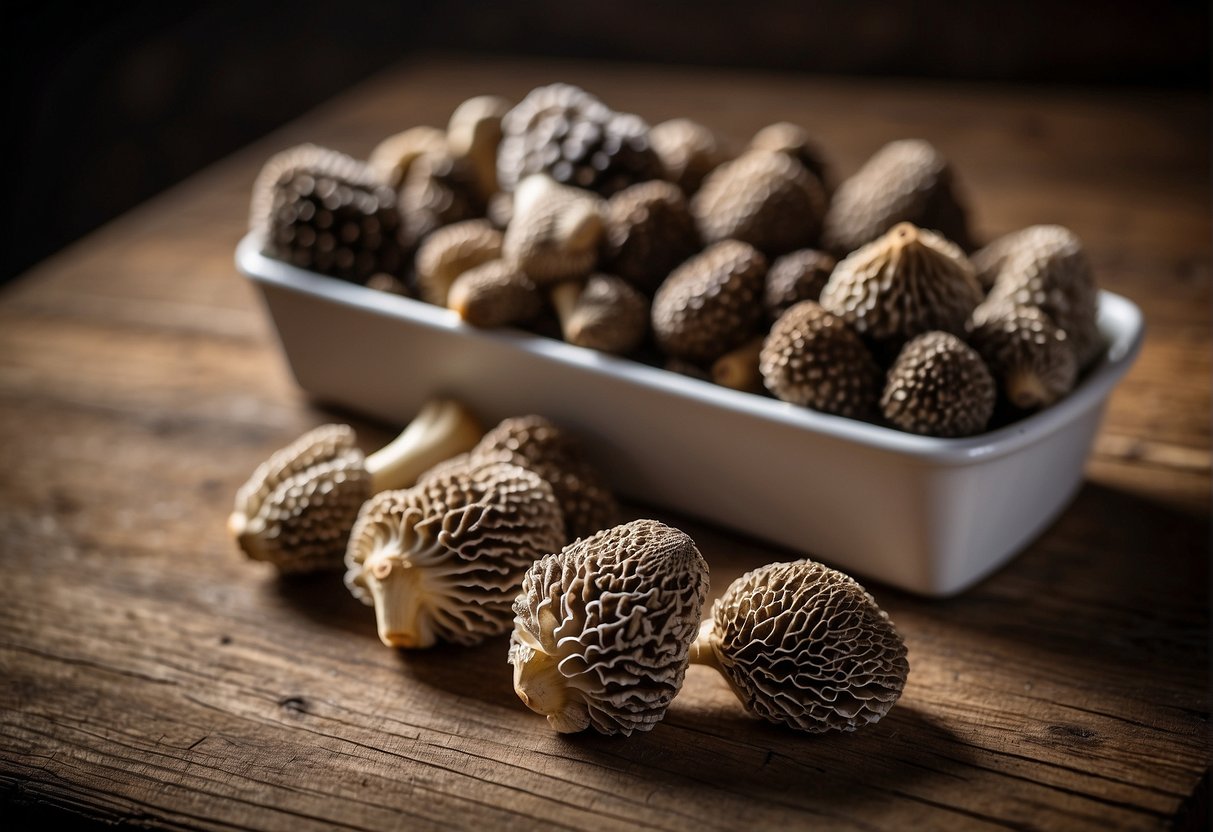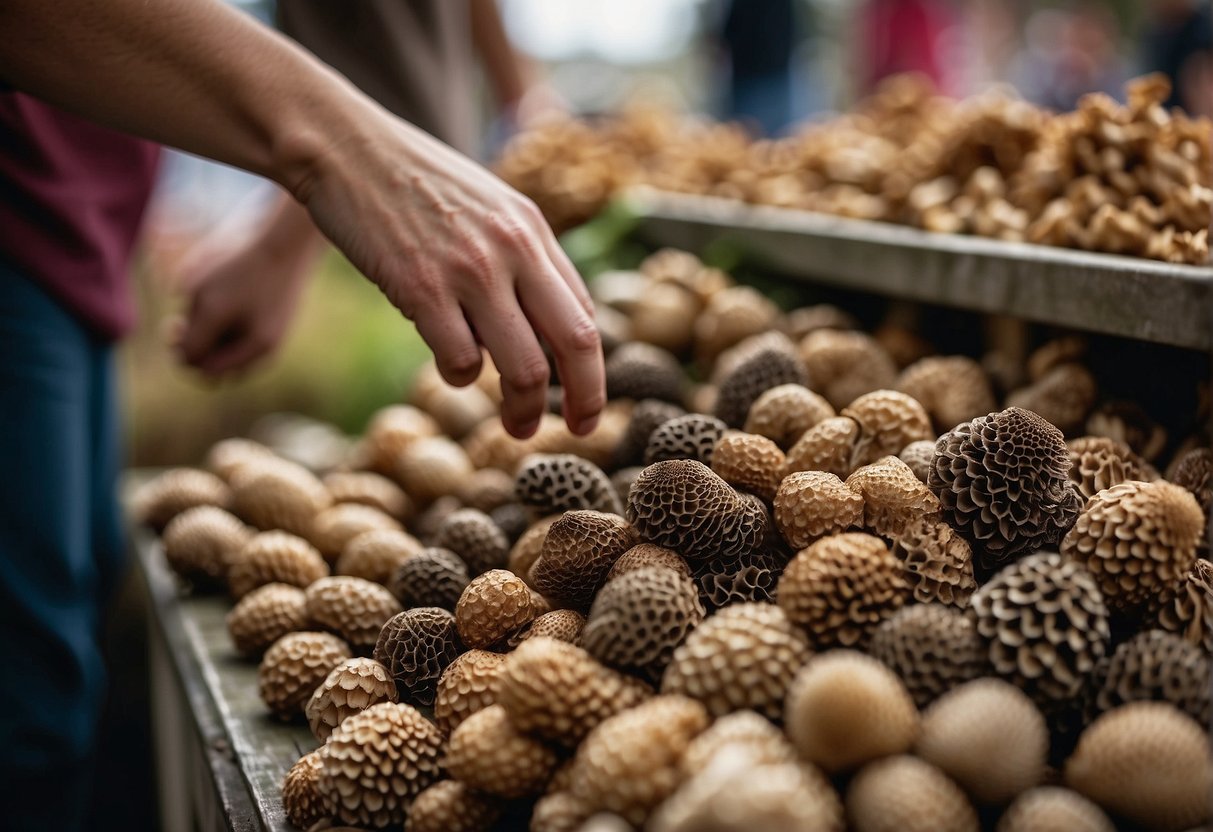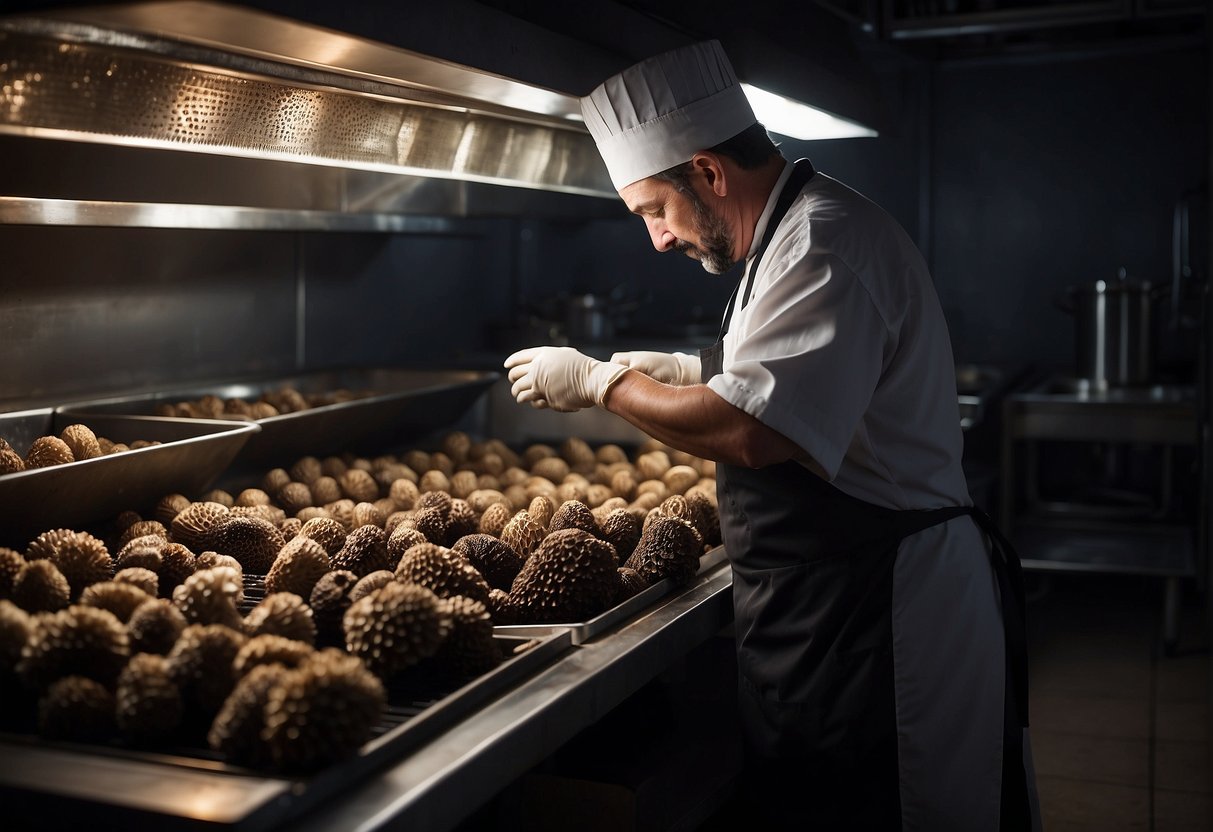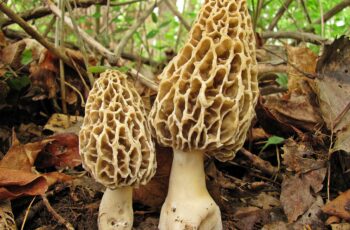As you plan your next foraging adventure or prepare to savor the unique flavor of wild fungi, the price of fresh morel mushrooms likely comes to mind. Known for their distinctive honeycomb appearance and nutty flavor, fresh morels are a prized find for foragers and a gourmet delicacy for food enthusiasts. The price of these elusive mushrooms can vary significantly based on factors such as region, seasonality, and supply chains. During a good season, when the foraging yields are high, you might find that prices are more favorable for your wallet.

Understanding the pricing of morel mushrooms will help you make the best decisions whether you’re buying or selling. Fresh morels, being highly sought after, can fetch a substantial price, especially outside their natural springtime growing season. Due to their short shelf life and the labor-intensive process of foraging, fresh morel mushrooms price tends to be higher compared to cultivated mushrooms. As a lover of the great outdoors and the treasures it holds, knowing the value of what you might find beneath the forest canopy adds another layer to the enjoyment and appreciation of the hunt for these unique mushrooms.
As you browse the markets or check online retailers, remember that fresh morels are often sold by weight, and their prices may fluctuate throughout the season. Keep an eye out for local growers or suppliers that might offer fresh morels at competitive prices due to lower shipping costs. Whether you’re adding them to a hearty stew, a savory sauce, or enjoying them sautéed with a touch of garlic, the investment in fresh morel mushrooms will surely elevate your culinary experience with a taste of the wild.
Understanding Morel Mushrooms
When you come across morel mushrooms during your outdoor adventures, you’re discovering a wild culinary treasure. Morels, known for their distinctive honeycomb texture and nutty flavor, are a delight for chefs and foragers alike. Let’s delve deeper into the characteristics that make morels a sought-after find.
Characteristics and Varieties
Morels are distinctive wild mushrooms from the Morchella genus. They are easily recognizable by their spongy, honeycomb-like cap. The size of morels can vary, but they typically stand between 2 to 4 inches tall. Fresh morels appear in the spring and their color ranges from pale cream to dark brown, depending on the variety. The most common types of morels include the yellow morel (Morchella esculenta), the black morel (Morchella elata), and the half-free morel (Morchella semilibera).
Culinary Uses
In the culinary world, morels are highly regarded by chefs for their rich, earthy, and nutty flavor. They are versatile and can be used in various dishes. You’ll find morels enhancing the taste of creamy sauces, enriching a savory risotto, or adding depth to a spring vegetable sauté. Before using fresh morels, it’s essential to clean them thoroughly and cook them well, as they are not safe to eat raw.
Nutritional Profile
Not only are morels prized for their unique flavor, but they also offer a good nutritional profile. They are a source of protein, fiber, and essential minerals such as iron, copper, potassium, zinc, and selenium. Morels are one of the few natural sources of vitamin D among mushrooms, which is especially valuable if you spend a lot of time indoors. Whether you’re a gourmet or a health-conscious eater, morels are a wonderful addition to your diet.
Harvesting and Availability

The quest for fresh morel mushrooms is a thrilling experience for you as a forager, combining the joy of the hunt with the satisfaction of a gourmet reward. Let’s explore how seasonality and your ability to forage directly affect the availability of these elusive fungi.
Foraging and Sources
When you’re on the hunt for morels, the prime time to explore is spring, especially in the temperate regions of the Pacific Northwest. You’ll find that wild morels tend to thrive in wooded areas, particularly where the forest floor is moist and rich with organic matter. It requires a trained eye to identify these fungi, as they often blend with their surroundings. Black morels, a sought-after variety, are common in these regions, and their discovery can be quite rewarding for keen foragers like yourself. Remember, the age of the morel is critical; younger morels are often more flavorful and tender.
- Key Sources:
- Natural wooded areas, frequently found post-wildfire (commonly known as burn morels)
- Regions of the Pacific Northwest, renowned for wild foraged varieties
Seasonality and Geographic Origin
Your chance of finding fresh morels is heavily influenced by their seasonality and geographic origin. Morels are predominantly a spring mushroom, flourishing from late February through May, with some variation based on the climate. In the Pacific Northwest, the season may start later and last until July. If you’re in the northwest or similar temperate climates, this is your prime season for harvesting. These natural morels are highly seasonal, and their availability often dictates the price in the market due to the labor-intensive nature of harvesting these wild mushrooms.
- Seasonality Factors:
- Late winter to spring in most areas, extending into summer in cooler, moist climates
- Influenced by environmental conditions such as moisture level, temperature, and aftermath of forest fires
As you ready your foraging gear, bear in mind that these factors crucially shape your success and the availability of fresh morels in the market. Enjoy the hunt, and may your forays into nature be as rewarding as the morels you seek.
Purchasing and Pricing

When it comes to acquiring fresh morel mushrooms, understanding the factors that influence their pricing is crucial to making an informed purchase.
Market Factors
Price: On the market, the cost of fresh morel mushrooms can typically range between $31.50 and $49.75 per pound, with variations depending on supply and demand. Morel mushrooms are highly sought after, especially when in season, which typically leads to a premium price.
Supply: Factors such as climate and the time of year play a significant role in the availability of morel mushrooms. As they are foraged rather than farmed, their supply is not consistent, making them less available and often more expensive outside of their natural growing season.
Demand: The demand for morel mushrooms spikes during the spring season and is particularly high from restaurants and cooking enthusiasts seeking the superior quality of this delicacy.
Quality: Grey morels are a variety that are particularly prized for their distinct flavor, often fetching a higher price in the market compared to their counterparts.
Product of the USA: Morels that are sourced domestically are often considered fresh and of high quality, contributing to the overall pricing structure.
Buying Tips
Order and Shipping: When ordering morels, ensure that the vendor offers speedy shipping, as morels are perishable. Prompt delivery helps maintain their quality.
Buying in Season: To get the best price, consider purchasing morels during their peak season, typically spring, as prices can be lower due to higher supply.
Check for Deals: Some suppliers offer web special pricing, especially when buying in bulk or when signing up as a first-time buyer.
By being mindful of these market factors and buying tips, you can make smarter choices when purchasing fresh morel mushrooms, ensuring that you get the best product within your budget.
Storage and Preparation

When dealing with morel mushrooms, it is crucial to focus on proper storage and preparation methods to maintain their unique earthy flavor and delicate texture. This not only extends the shelf life but also ensures the best culinary experience.
Storing Fresh and Dried Morels
Storing Fresh Morels:
Keep your fresh morel mushrooms in the refrigerator to preserve their freshness. Place them in a paper bag to allow for air circulation, which is vital for avoiding moisture accumulation that can lead to spoilage. Ensure the mushrooms are dry before refrigerating to prevent them from becoming slimy. Expect a refrigerated shelf life of up to a week.
Storing Dried Morels:
Dried morel mushrooms should be stored in an airtight container and kept in a cool, dry place. This method of preservation can keep the morels in good condition for months or even years. The weight of dried morels is significantly less, making them a convenient, concentrated option for adding deep flavor to dishes.
Cooking Recommendations
Enhancing Dishes:
Sauté your morels in butter with garlic to draw out their delicate flavor that food enthusiasts cherish. Incorporating a splash of white wine can further enhance the mushrooms’ inherent taste. Dried morelespecially, when rehydrated and added to a cream-based stew, provide an additional layer of flavor complexity.
Preparing Frozen Morels:
For frozen morels, avoid thawing them before cooking to prevent texture loss. Sauté them directly from the freezer into the pan for optimal results. Additionally, if you’re incorporating morels into stews, they can be added frozen and will thaw as they cook, infusing the stew with their earthen essence. Remember, whether fresh, dried, or frozen, morels offer a rewarding experience for the home cook and outdoorsman alike.


